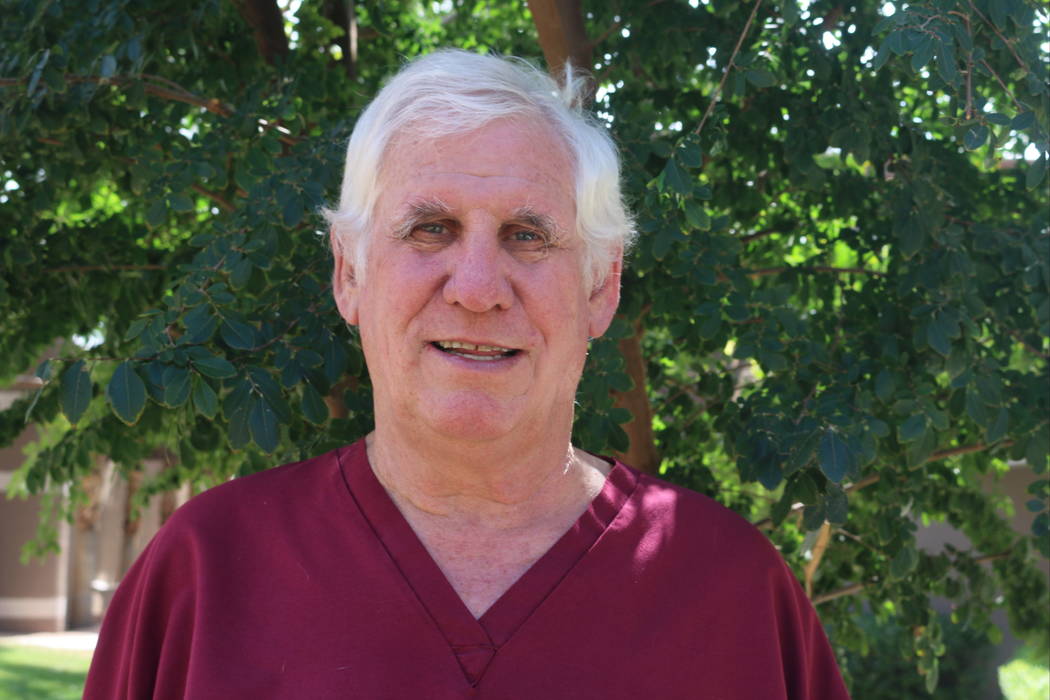5 questions about treating pain
We asked Dr. Robert H. Odell Jr., owner and medical director of the Neuropathy and Pain Centers of America in Las Vegas, about treating pain.
Review-Journal: What is neuropathy?
Dr. Odell: Peripheral neuropathy is a condition where the smaller nerves of the body (the peripheral nervous system) are damaged. These nerves send vital sensory information to the brain. Peripheral neuropathy affects about 21 million Americans. Diabetes remains the leading cause. However, there are hundreds of other potential causes including direct nerve trauma, kidney disorders, toxins such as chemotherapy drugs, alcohol and heavy metal exposure, chronic inflammation, hormonal imbalances and other factors. Neuropathy symptoms vary from person to person and include painful electric shocks, numbness in the feet, motor dysfunction and balance problems. It affects more than 8 percent of the population, is debilitating and often requires walking aids.
Is there anything specific to Las Vegas that makes our population more or less susceptible to this kind of chronic pain?
Many Las Vegas residents have worked at the Nevada Test Site (now known as the Nevada National Security Site), Yucca Mountain or Nellis Air Force Base, where they have been, over the years, exposed to a wide variety of toxins. Neuropathy can affect patients at any age, but most are older than 60. And Las Vegas is not unlike the rest of the nation (and the world) in that obesity is on the rise, with its attendant metabolic disorders and adult onset diabetes mellitus, the most common cause of neuropathy.
What are treatment options?
Peripheral neuropathy is a progressive disease that damages the nerves and reduces blood flow. The Neuropathy &Pain Center of Las Vegas helped develop a safe and effective treatment for patients who suffer from all forms of neuropathy. Using an advanced electromedical device (manufactured by RST-Sanexas), along with injections of local anesthetics, this combined electrochemical treatment directly signals all nerve cells with electronic impulses instead of smothering them with drugs, all of which have side effects. The technique enables the nerve cells to heal in a majority of cases; the results achieved will usually not regress.
Although the treatment must be done over weeks, patients including some who’ve suffered more than 10 years with neuropathy have enjoyed significant improvement. Many have discontinued use of walking aids, begun meaningful exercise and stopped taking pain medications. Many are able to sleep better, walk with more stability and realize an amazing improvement in their quality of life.
What are the challenges in treating chronic pain given the opioid epidemic?
The challenges to treating chronic pain have dramatically increased due to the opioid and prescription drug epidemic. In 2015, more people died from prescription drug overdose than from motor vehicle accidents. Government regulatory entities, from the DEA to statewide agencies, are holding doctors much more accountable for their controlled substance (narcotic) prescribing practices. National and state guidelines are beginning to restrict physicians’ abilities to treat even patients who may legitimately need an opioid for acute and chronic pain.
Energy medicine is one way to accomplish this goal. The Sanexas device has been used locally and nationwide to treat a wide variety of painful diseases. In the treatment of low back pain, for example, the electronic cell signaling approach, which has a profound anti-inflammatory effect, has been used in place of steroids. These and other “energy medicine” approaches have the distinct benefit of being virtually drug and risk free. What’s on the horizon in terms of treatments and/or research on chronic pain?
Many applications of energy medicine have the potential for bringing about paradigm shifts in the treatment of chronic pain. The RST-Sanexas device utilizes a series of treatments over a period of time in the case of neuropathic pain.
Other advanced pain treatments include procedures that:
■ Reduce scarring in the epidural space (a thin area between the inside of the spine and the protective layer around the spinal cord).
■ Long-term relief for back and knee pain through peripheral and spinal cord nerve stimulation into the back of the spinal cord. Signals from the generator device can be managed by a compact battery-powered generator either placed peripherally or implanted under the skin.
■ Treatments for migraines, tension, cluster and other types of headaches temporarily blocking the pain source with application of a topical local anesthetic into the nose.
If you are a Southern Nevada health care provider who would like to be considered for this feature, please send your name, specialty area and contact information to health@reviewjournal.com.





















